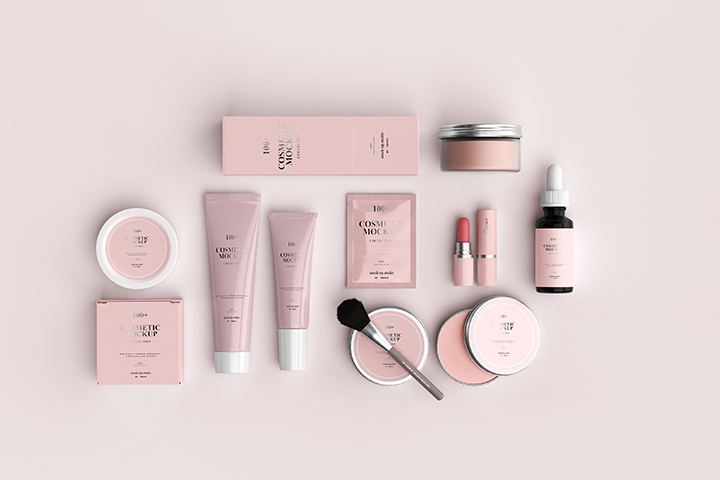Peek behind the label to discover what lurks in your skincare.
The skin, often underestimated in its significance, is indeed the largest organ in the human body. The three layers include epidermis, dermis, and hypodermis. Each of these layers also have sub-layers or other essential cell components. What we apply to our skin can directly impact our internal well-being. The ingredients within products we use penetrate the skin’s layers, eventually entering our bloodstream and lymphatic system.
Many mainstream skin care products contain a disturbing concoction of carcinogenic chemicals, allergens, and irritants. Therefore, it becomes crucial to pay close attention to the ingredients we allow on our skin. Reading product labels and educating ourselves on what ingredients to avoid becomes a pivotal step in safeguarding our body’s health.
Many personal care and beauty products contain petroleum-based elements, derived from crude oil. These ingredients act as surface lubricants in skincare but offer no nutritional benefits and often pose health risks.
What’s the Harm?
Petroleum-based ingredients create a barrier on your skin, hindering the absorption of essential nutrients from other skincare products. They can also clog pores, impede natural detoxification, and can lead to skin irritation, acne, and hormone disruption. Common petroleum-based ingredients include paraffin wax, petrolatum, and petroleum jelly, along with Toluene, Benzene, PEGs, DEAs, and ingredients ending in ETH, anything with PROPYL, METHYL, BUTYL and ETHYL. These elements are prevalent in hair care, moisturizers, lipsticks, perfumes, baby products, and makeup. To safeguard your skin’s health, opt for skincare products with natural, nutrient-rich ingredients. Your choice of skincare products can significantly impact your long-term health and beauty.
Among the many ingredients present in skincare products, the most harmful are: parabens, phthalates, formaldehyde, and fragrance. These culprits are often added to extend shelf life, improve product consistency, or enhance scent. However, they bring with them a host of health concerns. Parabens can disrupt hormonal balance, phthalates may negatively impact the endocrine system, formaldehyde and its releasing agents can cause skin irritation and allergies, and the umbrella term “fragrance” is often used to describe sneaky irritants. Opting for paraben, phthalate, and formaldehyde-free products, along with those labeled as “fragrance-free,” will help your skin’s health and overall well-being. Your skin deserves the best, and choosing skincare products wisely ensures it receives just that.
Mainstream Products
Many individuals opt for the convenience of shopping at local pharmacies or retail chains like Walgreens or CVS. While these establishments often offer affordable skincare products, the true cost may be your health. Even well-known brands like CeraVe and Cetaphil, although popular, conceal potentially harmful chemicals. One such chemical is Sodium Benzoate, a synthetic compound used to extend product shelf life. For instance, a closer look at CVS’s own brand body lotion reveals concerning ingredients, including Ammonium Lactate, mineral oil, Propylene Glycol, and more, as listed: Water, Ammonium Lactate, mineral oil, Glyceryl Stearate, Propylene Glycol, Glycerin, PEG-100 Stearate, CETYL ALCOHOL, Magnesium Aluminum Silicate, SODIUM HYALURONATE, Laureth-4, PEG-40 Stearate, Caprylyl Glycol, Sorbic Acid, Phenoxyethanol, Methylcellulose. As discussed earlier in this article, it’s evident that there are compelling reasons to be cautious when considering store brand products from chain pharmacies.
Homemade is Best
With so many harmful options available to us in the skincare market, we can reduce our toxic load by creating our own skin care. Here are some face moisturizing recipes you can whip up with ingredients found in your home:
(For all combinations, apply to face and let sit for 15-20 minutes before rinsing. Always spot test to learn if any ingredients cause skin irritation.)
Easy
• Mix coconut oil, local raw honey, and lemon.
• Mix raw local honey and pure aloe vera gel
• Mix green matcha tea, raw local honey, and baking soda
• Mix ½ a ripe avocado (mashed), 1 tsp. raw honey, and 1 tsp. plain full-fat yogurt.
Medium
Day Moisturizer for Dry Skin
Rich and liquid moisturizer for dry facial skin. It is also wonderful for dry hands, feet, and can be used as an enriching all-over body moisturizer, too.
Ingredients
• 4 tablespoons sweet almond oil or jojoba oil
• 2 tablespoons avocado oil
• 1 tablespoon sea buckthorn oil
• 10 drops essential oil
Steps
1. Mix oils together well in your bottle or container of choice.
2. Apply a light coat and gently massage into your skin. This is a rich oil, so start with a little bit and add more to determine how much your skin needs.
3. Be sure to shake before each use to recombine oils that might separate between applications.
Pink Rose-Hibiscus Soothing Moisturizer
Hibiscus flower has long been known for its skin hydrating properties. It’s also easy to procure, inexpensive, and gifts a lovely pink color to this moisturizer. The combination with soothing rose makes this a serious skin treat.
Ingredients
• 1/2 cup coconut oil
• 1/4 cup argan oil
• 2 tablespoons organic hibiscus tea
• 4 drops rose essential oil
Steps
1. Melt coconut oil in a double boiler until it’s very warm. Add argan oil
2. While you are waiting for the coconut oil to melt down, finely chop or pulverize the hibiscus petals.
3. Add the hibiscus powder to the warm coconut oil and argan oil mixture and let infuse for at least 2 hours or overnight.
4. Strain the hibiscus fragments out using a cheesecloth; strain directly into the container you will be storing your moisturizer in.
5. Add a few drops of rose essential oil and mix well.
It is obvious that understanding the impact of skincare goes beyond beauty. It’s also about respecting and nurturing the largest organ of our body. It’s about choosing products that do more good than harm, that nourish instead of neglect, and that uphold the principles of health over convenience or cost.
Researched by
Lauren Lovato
https://www.downtoearth.org/health/general-health/your-skin-it-absorbs
https://www.vitaman.com/blogs/news/toxic-skincare-ingredients?_pos=1&_sid=44da2ae7c&_ss=r




